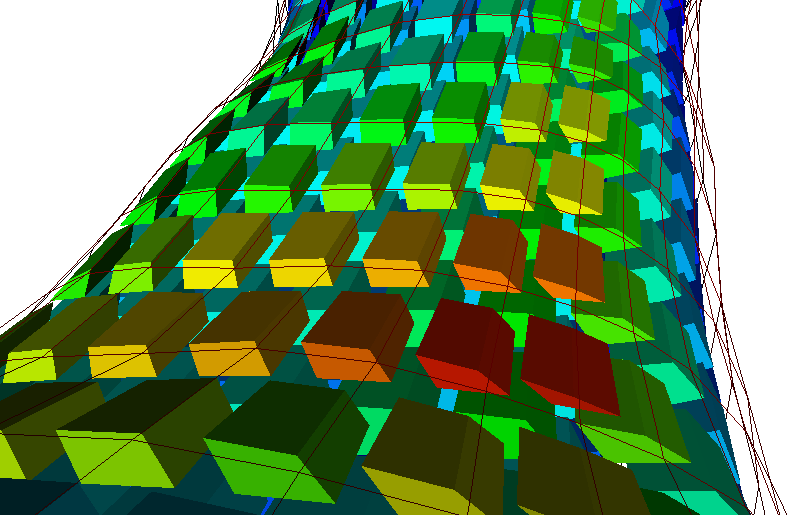Difference between revisions of "FE Mesh Quality Visualization Visualization"
| (One intermediate revision by the same user not shown) | |||
| Line 4: | Line 4: | ||
Visualizations utilize the vtkMeshQuality filter to evaluate mesh elements. We plan to extend the current mesh quality algorithms to add more tests for Hexahedral mesh element types in the future. | Visualizations utilize the vtkMeshQuality filter to evaluate mesh elements. We plan to extend the current mesh quality algorithms to add more tests for Hexahedral mesh element types in the future. | ||
| + | |||
'''Rendering Techniques''' | '''Rendering Techniques''' | ||
| − | The mesh quality filter adds | + | The mesh quality filter adds floating point "quality" values to each VTK cell in the mesh dataset. There is a one-to-one correspondence between mesh elements and cells in a vtkUnstructuredGrid object. Several techniques are planned for the visualization tools constructed by this project, including dynamic element sizing and thresholding elements above an adjustable quality value. In the example shown here, each element is reduced in size, yet keeps its aspect ratio. Each element is colored according to its individual quality value. |
| + | |||
| + | |||
| + | |||
| + | [[Image:hexQual4 - Dec06.png]] | ||
Latest revision as of 14:32, 3 January 2007
Home < FE Mesh Quality Visualization VisualizationThis topic of the FE project involves generating visuals using VTK that show the quality of individual elements in a Finite Element mesh. Generally, boundary elements are of lower quality than internal elements due to geometric constraints. It speeds up the mesh generation process if quick visualizations are constructed to provide element quality feedback in advance of importing the mesh into the FE simulation package.
Mesh Quality Filter
Visualizations utilize the vtkMeshQuality filter to evaluate mesh elements. We plan to extend the current mesh quality algorithms to add more tests for Hexahedral mesh element types in the future.
Rendering Techniques
The mesh quality filter adds floating point "quality" values to each VTK cell in the mesh dataset. There is a one-to-one correspondence between mesh elements and cells in a vtkUnstructuredGrid object. Several techniques are planned for the visualization tools constructed by this project, including dynamic element sizing and thresholding elements above an adjustable quality value. In the example shown here, each element is reduced in size, yet keeps its aspect ratio. Each element is colored according to its individual quality value.
